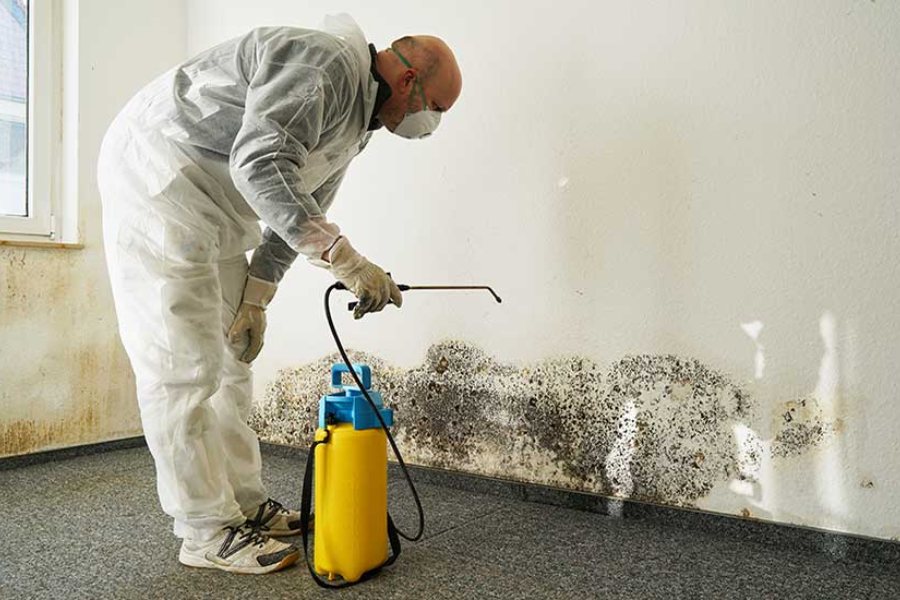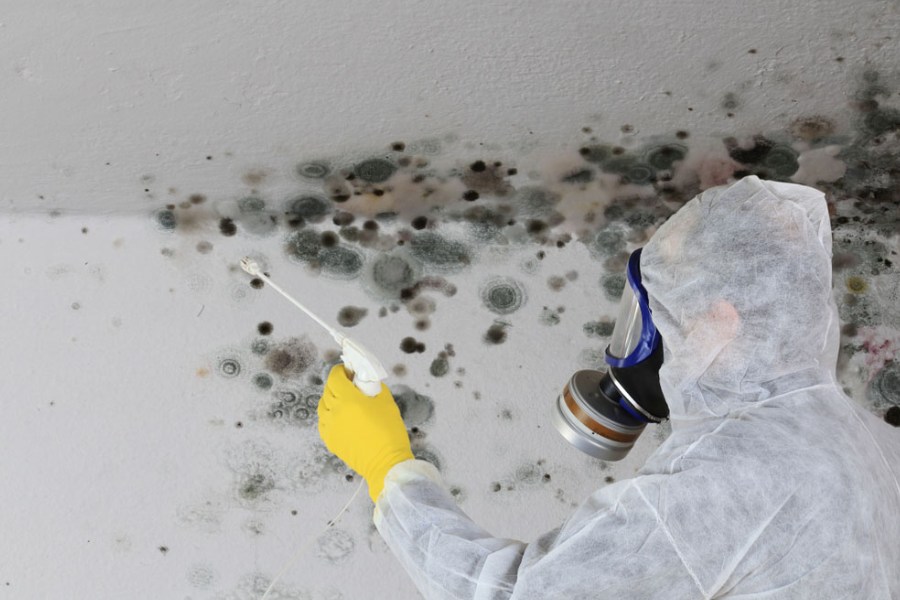Imagine returning home after a relaxing vacation, only to be greeted by an unwelcome sight: patches of fuzzy, discolored growth on your walls or ceilings. Mold, the silent invader, can turn a comfortable living space into a potential health hazard in days. But what is the best course of action: mold removal vs remediation?
In this article, we’ll delve into the world of mold control, exploring the nuances of removal and remediation techniques. We’ll explore what each process entails, the factors influencing their costs, and how to determine the best approach for your specific mold problem.
Dive into the differences and learn how to choose the right approach for your situation!

What Is the Difference Between Mold Removal and Mold Remediation?
Mold removal refers to the process of physically eliminating visible mold growth from building surfaces. This typically involves scrubbing, scraping, or using chemical treatments to destroy and remove mold colonies. Mold removal focuses on eradicating the existing mold problem in affected areas.
Mold remediation, on the other hand, is a more comprehensive approach that goes beyond simply removing visible mold. It involves addressing the root causes of mold growth, such as moisture issues, and implementing measures to prevent future mold infestations. Remediation includes removal but also encompasses cleaning, disinfecting, and repairing damaged areas.
Primary difference
The primary distinction between mold removal and remediation is their scope and long-term effectiveness. Mold removal is a focused approach that addresses only visible mold growth. Although it can yield immediate results, it may not resolve the underlying issues that initially caused the mold problem.
On the other hand, mold remediation adopts a comprehensive strategy. It eliminates existing mold and identifies and addresses the conditions that allowed mold to increase. This process includes repairing leaks, enhancing ventilation, and regulating humidity levels.
Mold Removal vs Remediation
Mold removal process
The mold removal process usually starts with surface cleaning, employing various methods to physically eliminate visible mold growth. This often includes scrubbing affected areas with household cleaners or specialized fungicides that target mold spores. The primary aim is to remove the immediately visible mold on surfaces.
However, mold removal has notable limitations. It often serves as a temporary fix that does not tackle the underlying cause of mold growth, such as persistent moisture issues. As a result, this method carries a high risk of mold returning, as it does not address the conditions that contribute to future mold development.
Mold remediation process
Mold remediation begins with a thorough inspection and assessment of the affected area. This critical first step helps determine the extent of mold growth and any underlying moisture issues. This assessment creates a detailed remediation plan to address every aspect of the mold problem.
The next phase involves containment and air filtration to prevent mold spores from spreading to unaffected areas. Contaminated materials that cannot be salvaged are carefully removed and disposed of. The area is then cleaned and disinfected using professional-grade equipment to ensure thorough decontamination.
As experts, we must emphasize that post-remediation verification is crucial to confirm that all mold has been effectively removed and that the area is safe. The final steps focus on restoring the affected areas and implementing measures to prevent future mold growth by addressing its root causes.
When to Choose Mold Removal
Small and isolated areas
Mold removal is often an effective solution for small, isolated mold growths, especially on non-porous surfaces. This includes minor mold spots on bathroom tiles, kitchen countertops, or window sills. In these cases, the mold has not deeply penetrated the materials and can usually be cleaned and removed effectively.
For such limited areas, mold removal offers a quick and cost-effective fix. However, it’s essential to address any underlying moisture issues that may have caused the mold. If the area stays dry after cleaning, mold removal alone may be adequate.
DIY projects
For homeowners who feel confident tackling minor mold issues on their own, DIY mold removal can be a practical and effective approach. A range of commercial mold removal products is available, designed to efficiently clean and eradicate mold from various surfaces.
These products typically include detailed instructions to ensure safe and effective application. To ensure safety while performing DIY mold removal, it is crucial to adhere to protective practices, such as wearing gloves and a mask and maintaining good ventilation in the work area.
Additionally, it is important to properly dispose of any materials used during the cleaning process. Understanding the limits of DIY methods and knowing when to seek professional assistance can help prevent incomplete remediation and ensure a thorough resolution of mold problems.
When to Choose Mold Remediation
Mold remediation becomes crucial in three primary situations. First, when large or widespread infestations occur, especially if mold has spread to multiple areas or infiltrated critical systems and hidden spaces.
Second, when toxic molds are present, or individuals with respiratory conditions or allergies are at risk, health concerns become a priority. Lastly, moisture problems, such as leaks, flooding, or high humidity, often require professional evaluation and repair.
In these cases, expert remediation eliminates existing mold and addresses the root causes to prevent future growth. Professional mold remediators have the specialized equipment and knowledge needed to manage these complex situations, ensuring a comprehensive and lasting solution to mold issues in your home or building.

Costs and Considerations
Cost of mold removal
The cost of mold removal varies depending on several factors. These include the extent of the infestation, the location of the mold, and the type of materials affected.
Other factors influencing the cost include the size of the area needing treatment, the severity of the mold growth, and the accessibility of the affected areas. On average, mold removal services can range from $500 to $6,000, with more severe cases or those requiring extensive cleanup on the higher end of the spectrum.
Cost of mold remediation
Mold remediation is a comprehensive process that focuses on removing the mold and resolving the moisture issues that caused it, ensuring the problem doesn’t return. Several factors contribute to the overall cost, such as the type of mold present, how far the contamination has spread, and any structural repairs that might be needed.
As a result, the cost of mold remediation can vary significantly. It typically falls between $1,000 and $10,000, depending on the job’s complexity and the size of the affected area.
Conclusion
Understanding the difference between mold removal vs mold remediation is crucial for effectively addressing mold problems. Mold removal focuses solely on eliminating visible mold from surfaces, often serving as a short-term solution.
In contrast, mold remediation takes a more comprehensive approach by removing mold and addressing underlying issues such as moisture and structural damage to prevent future infestations. While removal may be suitable for small, isolated problems, remediation is essential for larger infestations, toxic molds, or persistent moisture issues.
Choosing the right method depends on the severity of the mold issue and the need for a long-term solution. If you have doubts, we are committed to providing top-tier mold inspection, testing, removal, and prevention services designed to address every client’s needs.
Our dedicated team delivers effective and reliable solutions, ensuring a long-lasting resolution to your mold concerns while maintaining the highest quality standards. Contact us today and allow us to help you!


